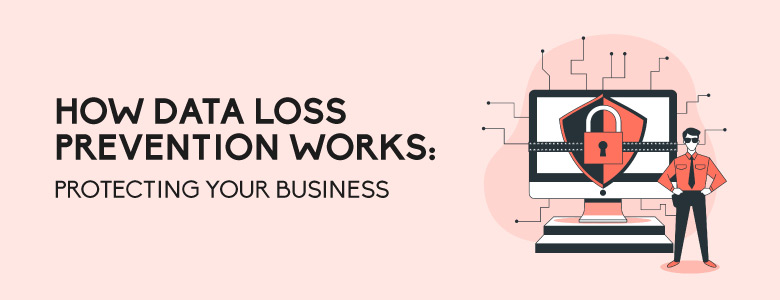As businesses rely more on digital information, keeping that data safe from loss, theft, or unauthorized access is crucial. This is where Data Loss Prevention (DLP) comes in. Understanding DLP is vital for any organization that wants to protect its valuable information and maintain trust with customers and partners. Let’s delve on how data loss prevention works, what it aims to achieve, its main features, and why it’s important for businesses in the Philippines.
How Data Loss Prevention Works

Data Discovery and Classification
The first step in DLP is finding where sensitive data is stored. DLP tools scan the organization’s network, including servers, databases, and devices, to locate sensitive information like personal data, financial records, and intellectual property. Once found, this data is labeled based on how sensitive it is, such as confidential, internal, or public. Proper labeling ensures the most valuable information gets the highest level of security.
Real-time Data Monitoring
A key part of DLP is watching data in real-time. DLP tools constantly check data as it’s accessed, used, and moved within the organization. They track user activities and data flows to spot any unusual or suspicious behavior. For instance, if an employee tries to send a lot of sensitive data outside the organization, the DLP system can send an alert and stop the transfer. Real-time monitoring helps catch and fix potential threats quickly, reducing the risk of data breaches.
Policy Enforcement and Endpoint Protection
DLP systems enforce data protection rules by controlling who can access and use data. For example, rules might limit access to certain data for specific users or departments or block sending sensitive information via email. Sensitive data can also be encrypted to protect it from unauthorized access during transfer or storage. DLP tools also control the use of USB drives and external hard drives to prevent data from being taken out of the organization.
It’s important to note that DLP is not a plug-and-play solution when it comes to its rules and restrictions. A common misconception in the Philippine business landscape is that DLP rules can be applied straight out of the box. However, businesses must create and customize their own ruleset to fit their specific needs and workflows. This can initially seem daunting but is crucial for the DLP system to effectively protect sensitive data and meet regulatory requirements. Taking the time to set up these rules properly ensures that the DLP solution works as intended and provides maximum security benefits.
Incident Response and Compliance Reporting
When a data loss incident happens, DLP systems create alerts and notifications. Security teams can then investigate what happened, find the cause, and take steps to fix the problem. A good incident response is crucial for reducing damage and preventing future incidents. DLP tools keep detailed records of data access and transfers, providing an audit trail for compliance. This helps organizations show they are following data protection regulations and internal policies.
Benefits of Implementing DLP

Using DLP solutions can make operations run more smoothly. By automating data protection and watching data in real-time, organizations can lighten the load on IT and security teams, allowing them to focus on more important tasks. DLP makes data security stronger by finding and fixing risks before they become big problems. With features like real-time monitoring, data encryption, and rule enforcement, DLP solutions help keep sensitive information safe from unauthorized access and data breaches.
Another key benefit of DLP is ensuring regulatory compliance. DLP solutions help organizations follow various data protection laws, such as the Data Privacy Act in the Philippines, GDPR in Europe, and HIPAA in the United States. Meeting these regulations not only prevents legal penalties but also builds trust with customers and partners.
DLP and the Philippine Business Landscape

For businesses in the Philippines, DLP is crucial because of growing cyber threats and strict data protection laws. Using DLP helps Philippine businesses protect sensitive data, follow the Data Privacy Act, and avoid fines and damage to their reputation. The Data Privacy Act of 2012 requires businesses in the Philippines to protect personal data. DLP solutions help meet these rules by finding, classifying, monitoring, and responding to data issues. Following the Data Privacy Act is essential to avoid legal trouble and keep customer trust.
Although setting up DLP can be challenging and may need extra resources and expertise, it also offers big benefits. Investing in DLP can improve data security, help businesses comply with laws, and give them a competitive edge. As more companies in the Philippines adopt cloud services and digital transformation, strong data protection becomes even more important.
If you and your company are interested in learning more about DLP and other security solutions that can better secure your data, you can contact us at marketing@ctlink.com.ph to set a meeting with our team today!

